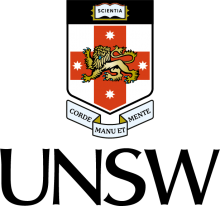Removing personal information from applications to use supercomputers, telescopes and spectrometers can improve early career academics’ prospects of securing research time on these in-demand instruments, a study says.
The results, published as a preprint pending peer review, suggest that anonymisation can create a “positive ripple effect” in the STEM career pipeline by helping researchers overcome systemic barriers. Grants “represent only one piece of the puzzle contributing to inequity in STEM research”, the paper says.
The study was conducted by the office of the Australian government’s women in STEM ambassador, Lisa Harvey-Smith, at UNSW Sydney. It analysed the results of applications for access to four research infrastructure collections – a suite of radio telescopes, the Australian Centre for Neutron Scattering (ACNS), the Anglo-Australian Telescope (AAT) and high-performance computing facilities in Canberra and Perth – before and after anonymisation techniques had been applied.
Three of the groups asked applicants to exclude things such as names, affiliations and funding sources from their primary submissions, with this information relegated to a separate document used for checking rather than assessment. The fourth organisation asked for first initials instead of names, with affiliations removed and applicants listed alphabetically “to conceal lead investigator’s identity”.
The study found that before the submission processes had been changed, gender and seniority had barely influenced applicants’ success rates. But anonymisation fuelled a “significant increase” in success rates for postdoctoral researchers at ACNS, mainly at the expense of more experienced applicants.
Success rates rose from 61 per cent to 78 per cent among early career researchers while declining from 61 per cent to 50 per cent among other applicants.
Anonymisation also improved women’s success rates at AAT. But once the results from all four infrastructure collections had been pooled, only the seniority changes remained statistically significant.
Professor Harvey-Smith said anonymous applications avoided “well-known psychological shortcuts” that assessors tended to take, particularly if they were overworked. She said it was understandable that harried judges allowed their assessment of projects to be influenced by the cachet of the applicants’ institutions.
“It…illustrates the point that people are very time-poor. The quicker people try to make decisions, the more biases come in,” she said.
Lead author Isabelle Kingsley said securing access to some research facilities could be as pivotal – and difficult – as winning grants. “For some researchers, equipment means more than money,” she said. “For example, you may be one of many astronomers needing to use a specialised telescope. There’s a chance you’ll get some time on it, but there’s a chance that you won’t. If you don’t, and it’s what you need to do your research, then you can’t do it. So it is very competitive.”
Register to continue
Why register?
- Registration is free and only takes a moment
- Once registered, you can read 3 articles a month
- Sign up for our newsletter
Subscribe
Or subscribe for unlimited access to:
- Unlimited access to news, views, insights & reviews
- Digital editions
- Digital access to THE’s university and college rankings analysis
Already registered or a current subscriber? Login










